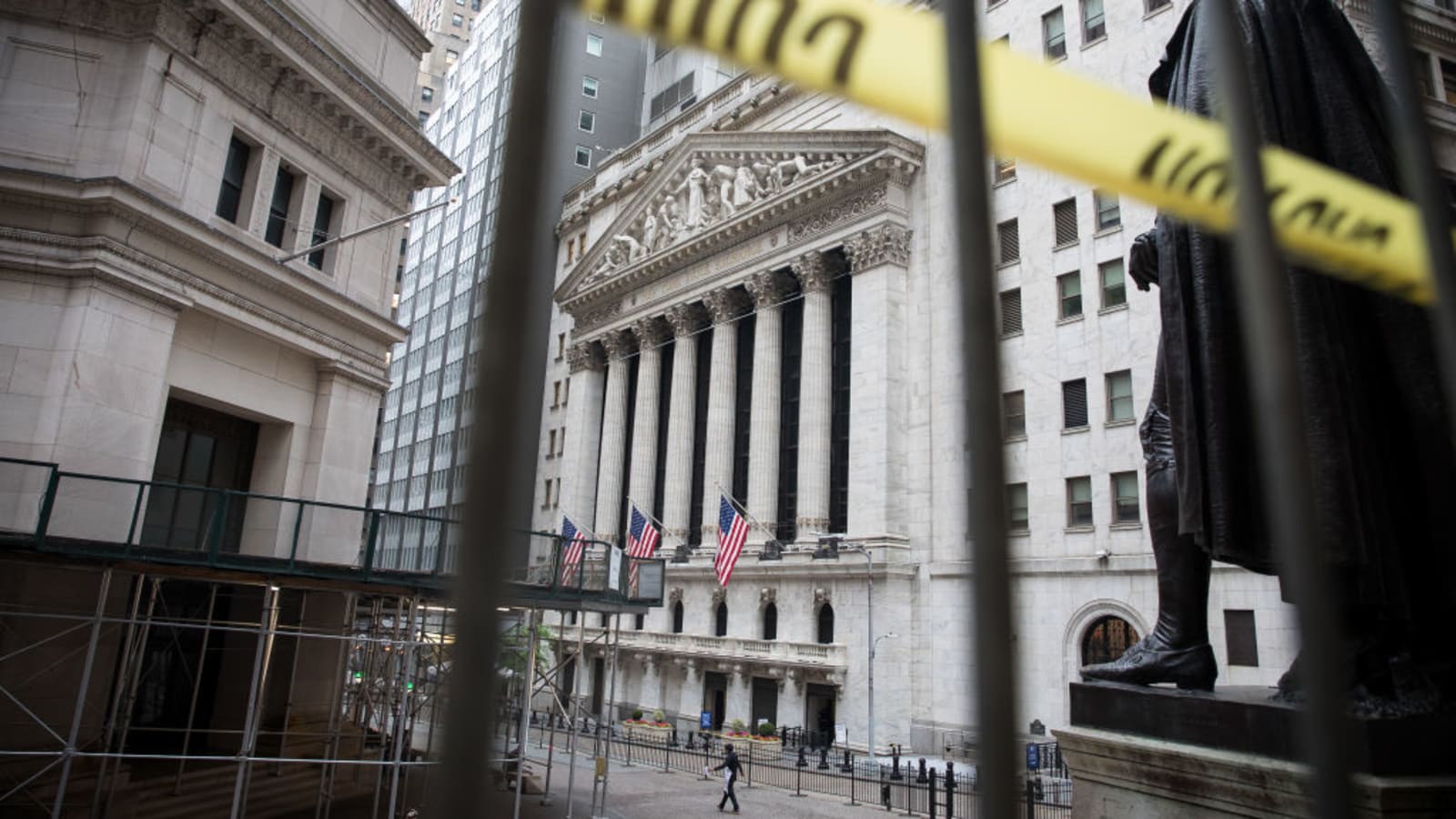The Federal Reserve put new restrictions on the U.S. banking industry Thursday after its annual stress test found that several banks could get uncomfortably close to minimum capital levels in scenarios tied to the coronavirus pandemic.

The Fed said in a release that big banks will be required to suspend share buybacks and cap dividend payments at their current level for the third quarter of this year. The regulator also said that it would only allow dividends to be paid based on a formula tied to a bank’s recent earnings.
Furthermore, the industry will be subject to ongoing scrutiny: For the first time in the decade-long history of the stress test, banks will have to resubmit their payout plans again later this year, and restrictions on payouts could remain in effect. They may have to repeat this cycle every quarter, the regulator said.
Bank stocks slumped after the close of regular trading in New York. Shares of Wells Fargo, which had climbed during the day, gave back some of those gains, falling 3.3%. Goldman Sachs slumped 3.9%. JPMorgan Chase dropped 1.9%.
“While I expect banks will continue to manage their capital actions and liquidity risk prudently, and in support of the real economy, there is material uncertainty about the trajectory for the economic recovery,” Fed Vice Chair Randall Quarles said in a statement. “As a result, the Board is taking action to assess banks’ conditions more intensively and to require the largest banks to adopt prudent measures to preserve capital in the coming months.”
The move signals that the unprecedented nature of the coronavirus pandemic, and the difficulty in forecasting what the future holds for banks, is making the Fed cautious. Regulators and the industry are keen to avoid the mistakes of the previous crisis, where firms made billions of dollars in payouts only to have to raise capital later. The biggest U.S. banks already said in March that they would voluntarily suspend share repurchases, which make up roughly 70% of capital payouts for the industry.
What remained were the dividends, which bank analysts have mostly assumed would remain at their current levels – with the exception of Wells Fargo, which is struggling to restore profits after its fake accounts scandal. Still, options market traders have bet that banks would be forced to cut dividends, even at JPMorgan, the biggest and most profitable of the megabanks.
“These companies are effectively nationalized,” David Ellison, a portfolio manager at Hennessy Funds, said in a CNBC interview. “It sounds like buybacks aren’t going to come back for a long time, and the dividends are going to be subject to what the Fed believes the economy looks like.”
The banks are expected to disclose their capital plans, and whether they actually maintain their current dividend payouts, on Monday, June 29.
Still, it appears that the industry dodged a bullet: Fed Governor Lael Brainard said in a separate statement that she supported a blanket suspension of all payouts for the industry. Doing so would “create a level playing field and allow all banks to preserve capital without suffering a competitive disadvantage relative to their peers,” she said.
On top of the Fed’s typical test, which examines how lenders fare during a severe economic downturn, the regulator looked at three scenarios tied to the current pandemic: A V-shaped recession and recovery, a slower U-shaped outlook, and a W-shaped scenario that would include a double-dip recession.
Since the real economic fallout from the pandemic already exceeds the typical severe economic downturn from previous exams, it is these three scenarios that garner the most interest from bank analysts and investors.
While the Fed was careful to say that the scenarios are not predictions of what will actually happen, they do hew closely to what bank executives have said could be the course of the economy: Unemployment would peak at up to 19.5%.
That could cause up to $700 billion in loan losses for the 34 banks in the exam, and the industry’s aggregate capital ratios could fall from 12% at the end of 2019 to as low as 7.7%. Capital, which is the difference between a bank’s assets and liabilities, acts as a cushion to absorb losses.
While most of the industry would remain well capitalized, in the harsher U- and W-shaped scenarios, several banks “would approach minimum capital levels,” the Fed said. The regulator didn’t disclose which banks would skate close to their minimums, however.
The formula for dividend payouts involves averaging net income from the previous four quarters, Brainard said. That probably puts Wells Fargo at greatest risk for a dividend cut, because its profits fell by almost 90% in the first quarter as it set aside money for loan losses.
In her statement, which amounted to a rare dissenting opinion of the Fed’s actions, she said that allowing banks to continue making payouts, even if they are capped, is “inconsistent with the purpose of the stress tests, which is to be forward-looking by preserving resilience, not backward looking by authorizing payouts based on net income from past quarters.”
Up to one-quarter of banks could be pushed close to their minimum capital levels under the Covid-19 scenarios, said Brainard, who is the Fed board’s only holdover from the Obama administration.
“Past experience shows that banks operating close to their regulatory minimums are much less likely to meet the needs of creditworthy borrowers, and the resulting tightening of credit conditions could impair the recovery,” she said. “Despite the substantial likelihood that banks will need larger capital buffers to absorb losses under plausible scenarios, the authorization permits distributions that will deplete capital buffers.”
[contextly_sidebar id=”gb2Xv6IHBZASHxYzR90so3ZpuwwMj2F7″]


